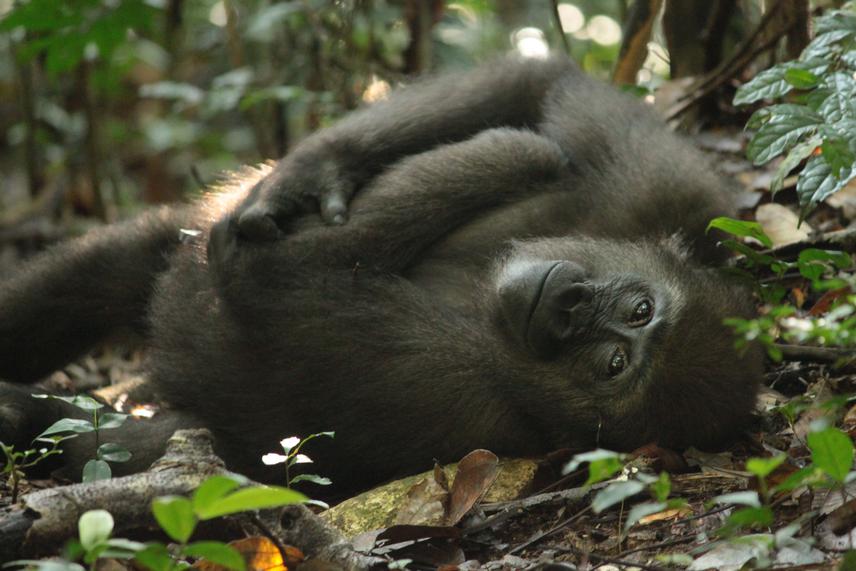Kathryn Shutt
This research aims to generate critical information on the impact of ecotourism on gorillas, specifically in terms of human-derived disease and stress, and to investigate how the relationship between these two factors relates to the risk of anthropozoonosis.

Many conservationists do not believe that gorillas should have to be the focus of tourism in order to pay for their own conservation, however nature tourism is a potentially invaluable tool to assist conservationists in preserving populations of wild primates, and funding mechanisms independent of tourism are as yet a long way from being a feasible gorilla conservation tool. It is therefore essential to produce definitive guidelines based on scientific research which will ensure the long-term well-being of the animals, which crucially begins with monitoring the effects of habituation and tourism on their physiology. Notably however, the stress endocrinology of western lowland gorillas in the wild has never been studied, and the interaction between immune and endocrine measures has not been addressed in any study on habituation or ecotourism, even though such stressors may cause immune suppression, increasing susceptibility to infectious diseases and decreasing reproductive success. Lack of accurate data in relation to both:
a) motivations/expectations of different stakeholders engaged in gorilla ecotourism,
b) public awareness/perceptions of risks involved in such activities, constrains the identification and understanding of what disease interfaces exist, and how and why they emerge. Furthermore, a lack of information concerning
c) the personal (cultural, educational and environmental) and epidemiological histories that humans bring to their interactions with gorillas
d) the direct biological impacts of stress and incurrence of novel pathogens by gorillas as a result of these close-contact interactions with humans, suggests that the full potential and ultimate goals of gorilla conservation initiatives may be undermined.
The main achievement of this work is to therefore fill this critical gap in knowledge regarding the impacts of harnessing tourism to nature conservation, and how this affects the long-term conservation of the western lowland gorilla. By gaining an integrated understanding of the numerous factors that influence human-primate disease transmission and incorporating them into conservation biology, these problems can be better controlled, and as a consequence directly increase the positive impact of gorilla conservation via tourism.